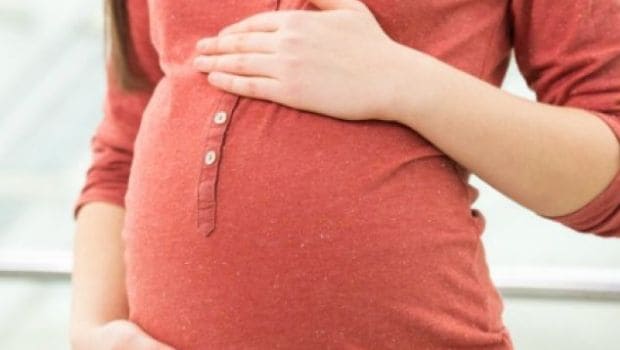How to improve haemoglobin levels during pregnancy?
Q: I am 12 weeks pregnant and my haemoglobin (Hb) level is 8. How can I increase it? What type of food should I include in my diet (both vegetarian and non-vegetarian)?
A:The most common cause of anaemia in pregnancy is deficiency of iron (~85% cases) and folic acid. Even if a woman is not anaemic at the time of pregnancy, she may still develop anaemia as the pregnancy progresses due to increased demands of the developing baby. There are certain risk factors for women being anaemic and these include: poor nutrition, inadequate gap between pregnancies, persistent nausea or vomiting in early pregnancy and twin pregnancy. Normally, the body concentration of iron is regulated carefully by cells in the proximal part of the small intestine, which change iron absorption to compensate body losses. Iron deficiency is caused by either reduced intake of oral iron or excessive loss of iron from the body. Blood loss (haemorrhage) is the commonest cause of excessive iron loss from the body with gastrointestinal bleeding sometimes being so insidious that it may be overlooked. Bleeding during periods in women too may go unrecognised. Menstrual losses vary considerably (10-250 ml) and the loss of iron (elemental) with each normal menses is around 12-15 mg. This may be as high as 100 mg in some women. These factors double the iron requirement in women. Poor iron absorption is not commonly seen except in patients with diseases of the small intestine like sprue, celiac disease, regional enteritis or previous intestinal surgery, which impact on iron absorption. The amount of iron absorbed by the body is only 10% of the total amount consumed i.e. only 1 mg of iron is absorbed for every 10 to 20 mg of iron ingested. A normal diet must include 1.5-2 mg/day of elemental iron to compensate for menstrual losses alone. In pregnancy, 500 mg of additional iron is needed by the mother (to expand her red cell mass) while another 500 mg is needed for the baby and placental tissues. Thus, on an average, an additional 3 mg/day of elemental iron must be absorbed from dietary sources. The amount of iron absorbed by the body is only 10% of the total amount consumed, thus 30 mg/day needs to be consumed to meet the requirement. Absorption of iron from food is influenced by multiple factors. One important factor is the form of the iron. Heme iron, found in animal sources, is highly available for absorption in contrast to non-heme iron found in vegetable sources. Vegetarians need more iron in their diets than non-vegetarians because the iron from plant foods is not as well absorbed as it is from animal foods. Vegetarians should choose several iron-rich plant foods daily. Grains, beans and lentils, vegetables (green-leafy ones, tomato, potato, green & red chillies etc), fruits, nuts and seeds are rich sources of non-heme iron. The absorption of non-heme iron can be improved when a source of heme iron meat/fish/poultry is consumed in the same meal or iron absorption enhancing foods like fruits/fruit juices are consumed. But coffee/tea and calcium if consumed along with a meal impair iron absorption.

Treatment of most patients with iron deficiency is with oral iron therapy. The underlying cause too is corrected so that deficiency does not recur. The cheapest and most effective form is ferrous iron. The side effects experienced on taking iron tablet are proportional to the amount of iron available for absorption. The iron preparation you take should contain between 30-100 mg elemental iron. Avoid enteric-coated or prolonged-release preparations. The dose you take should be sufficient to provide between 150-200 mg elemental iron per day and the tablet may be taken 2 to 3 times a day about 1 hour before meals. Injectable form of iron is given to patients who are either unable to absorb oral iron or who have increasing anaemia despite adequate doses of oral iron. It is expensive and has greater side effects than oral iron preparations. Packed cell transfusion is reserved for patients who have severe acute bleeding or lung/heart disease. The treatment should be continued for 3 months after the hemoglobin has returned to normal so that the body iron stores are replenished. Response to treatment is confirmed by doing a reticulocyte count after 10-12 days of treatment and the rate of rise of hemoglobin (with adequate dose of iron) is about 1 g/dl per week. An iron deficient mother can have premature labour, intrauterine growth retardation (poor development of baby), severe anaemia due to normal blood loss during delivery and increased susceptibility to infection. The likelihood of postpartum transfusion may be reduced if a woman enters the birth with a higher hemoglobin level.
RELATED FAQ
-
Am i infertile or there is some problem with my sperm?
-
I want to have a baby but i am having some problem with my sperms.
-
Does high TSH level affect pregnancy?
-
Why is my pregnant wife experiencing from yellowish discharge?
-
Why am I having pain in my lower abdomen during pregnancy?
-
How can my rubella infection be treated?

















